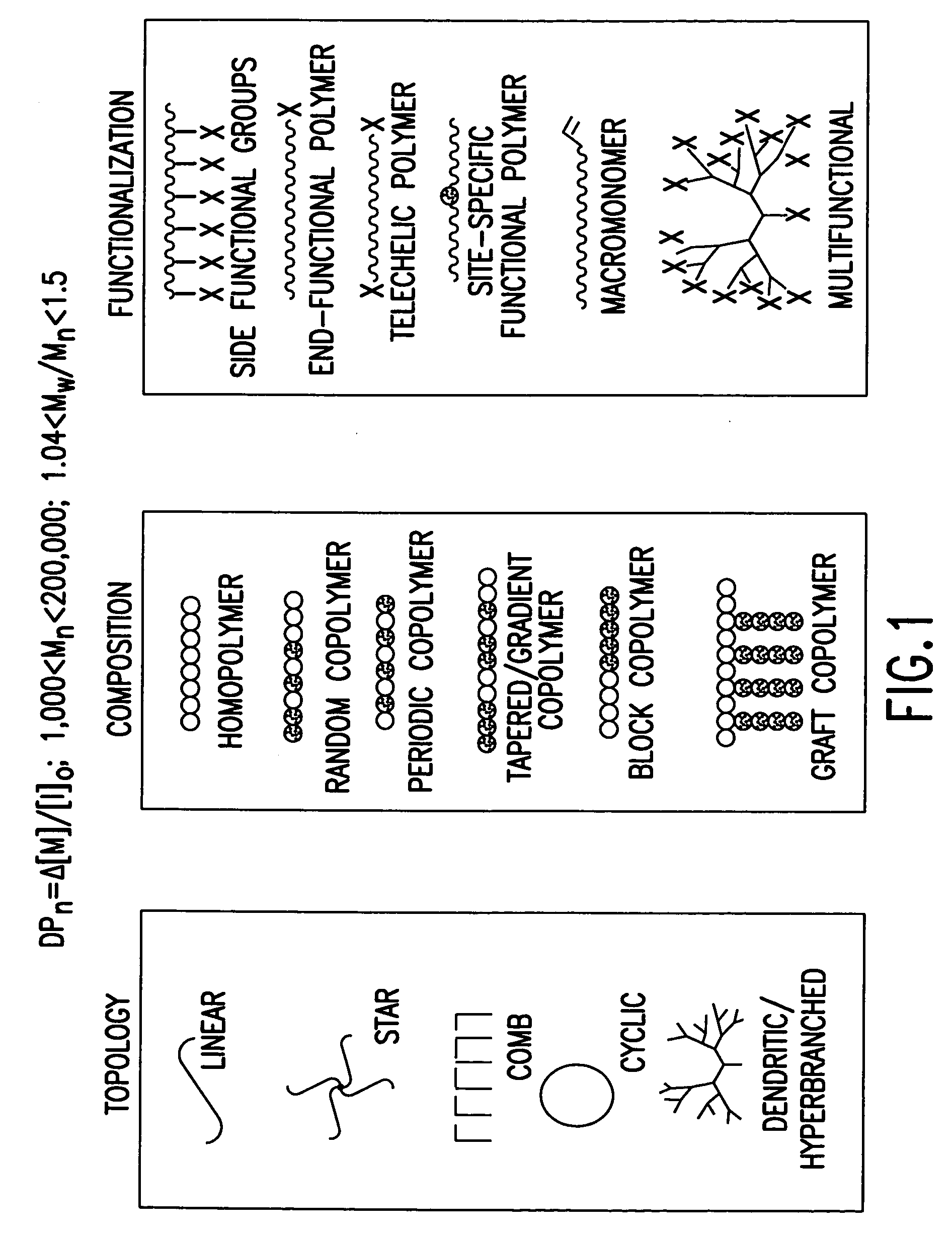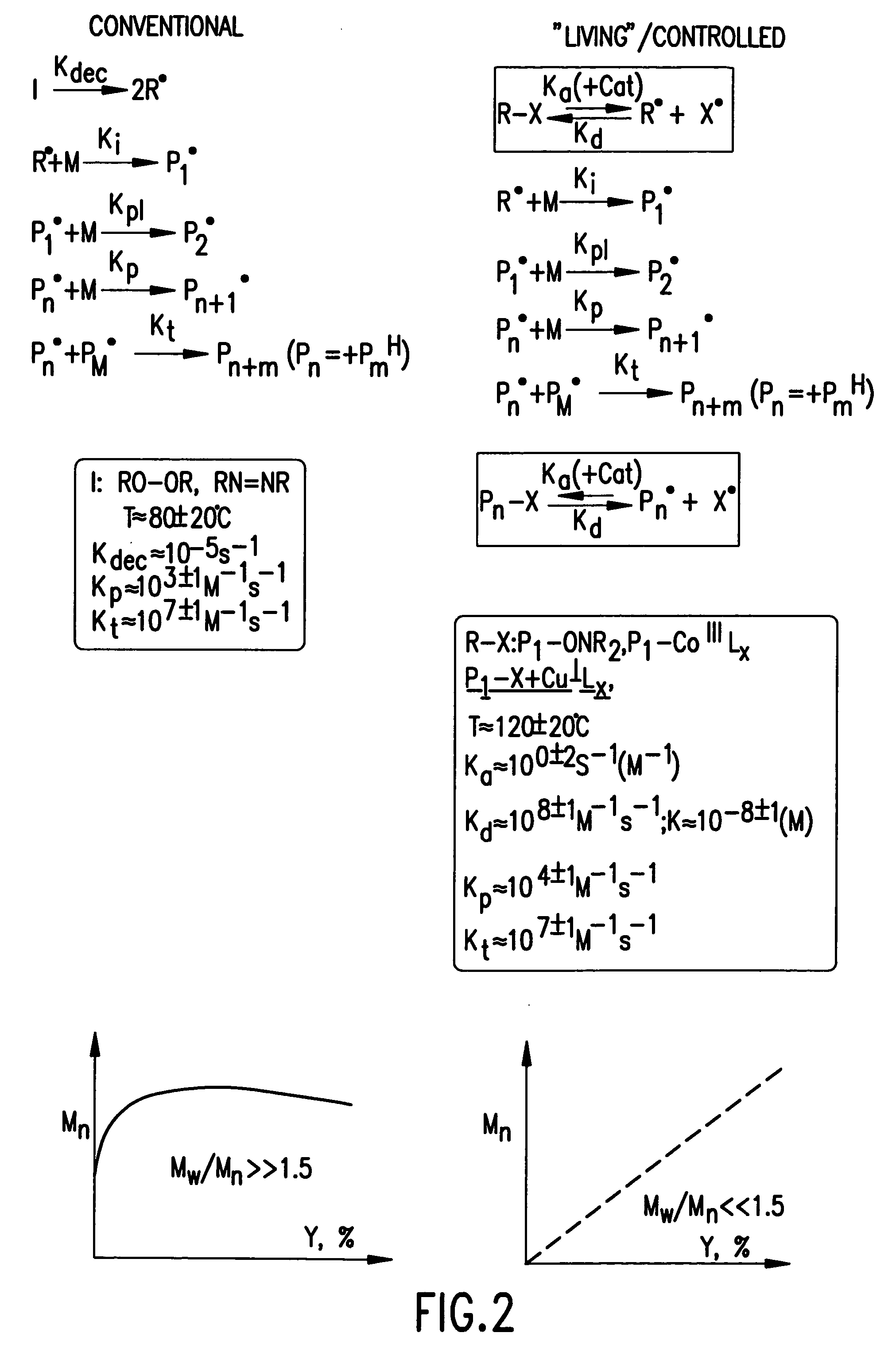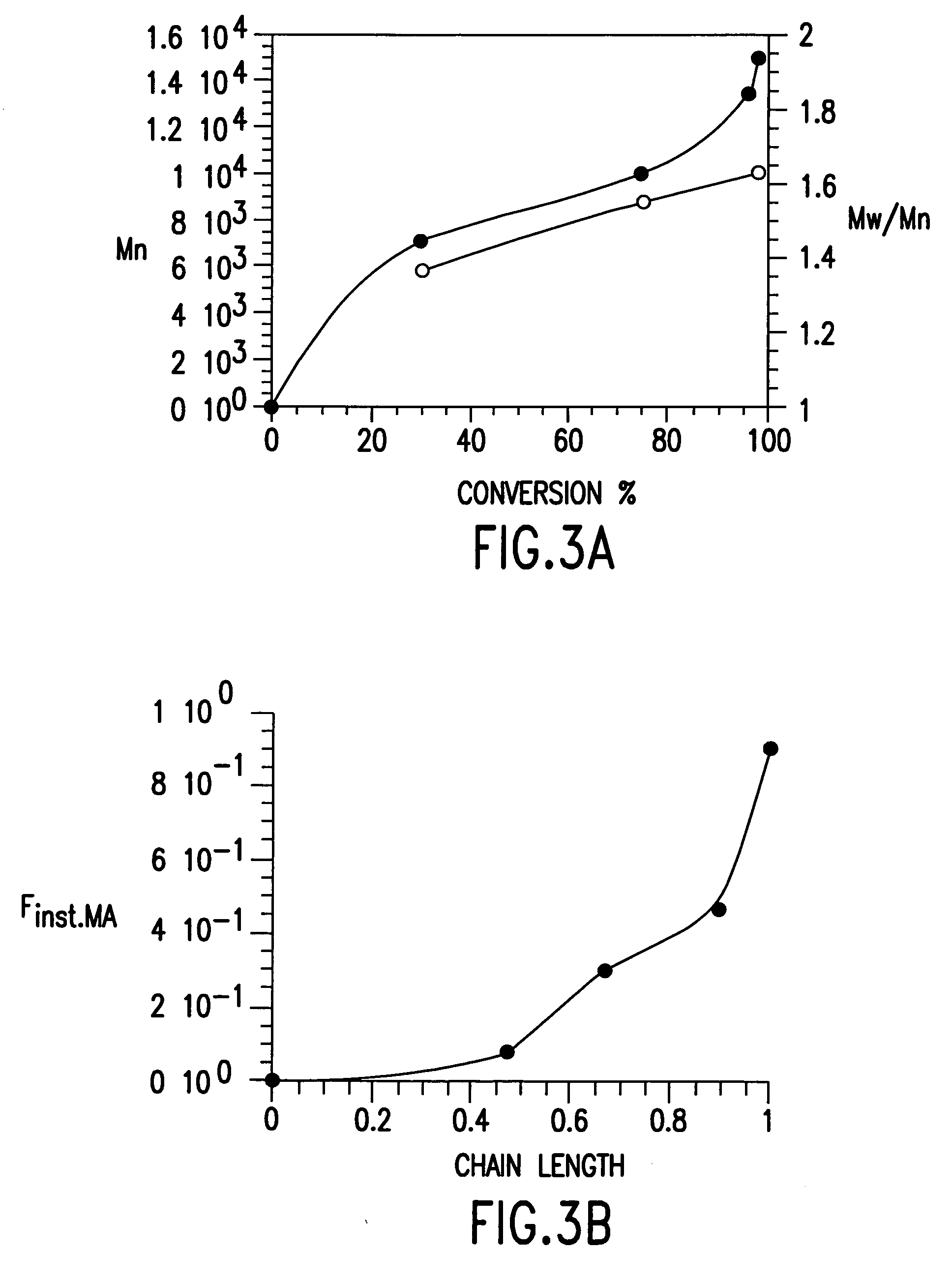Processes based on atom (or group) transfer radical polymerization and novel (co)polymers having useful structures and properties
a technology of atom transfer and polymerization process, which is applied in the field of new (co) polymers and a novel radical polymerization process, can solve the problems of difficult control of molecular weight and polydispersity, certain block copolymers cannot be made by other polymerization processes, and none of these “living” polymerization systems includes an atom transfer process, so as to achieve uniform and more highly controllable products
- Summary
- Abstract
- Description
- Claims
- Application Information
AI Technical Summary
Benefits of technology
Problems solved by technology
Method used
Image
Examples
example 1
[0245] The effect of air exposure upon heterogeneous ATRP of styrene. The following amounts of reagents were weighed into each of three glass tubes under an inert atmosphere in a nitrogen-filled dry box: 11.0 mg (4.31×10−2 mmol) of [(bipy)CuCl]2 (Kitagawa, S.; Munakata, M. Inorg. Chem. 1981, 20, 2261), 1.00 mL (0.909 g, 8.73 mmol) of dry, deinhibited styrene, and 6.0 μL (6.36 mg, 4.52×10−2 mmol) of dry 1-phenylethylchloride [1-PECl].
[0246] The first tube was sealed under vacuum without exposure to air.
[0247] The second tube was uncapped outside of the dry box and shaken while exposed to ambient atmosphere for two minutes. The tube was then attached to a vacuum line, the contents were frozen using liquid nitrogen, the tube was placed under vacuum for five minutes, the contents were thawed, and then argon was let into the tube. This “freeze-pump-thaw” procedure was repeated before the tube was sealed under vacuum, and insured that dioxygen was removed from the polymerization solutio...
example 2
[0250] General procedure for the homogeneous ATRP of styrene. The following amounts of reagents were weighed into glass tubes under ambient atmosphere: 12.0 mg (8.37×10−2 mmol) of CuBr, 1.00 mL (0.909 g, 8.73 mmol) of deinhibited styrene, and 12.0 μL (16.3 mg, 8.8×10−2 mmol) of 1-phenylethylbromide [1-PEBr]. For polymerizations using dNbipy, 72.0 mg (0.175 mmol) of the ligand was added, for dTbipy, 47.0 mg (0.175 mmol) was added, and for dHbipy, 62.0 mg (0.175 mmol) was added. Two “freeze-pump-thaw” cycles (described above) were performed on the contents of each tube in order to insure that dioxygen was removed from the polymerization solution. Each tube was sealed under vacuum.
[0251] The tubes were placed in an oil bath thermostatted at 100° C. At timed intervals, the tubes were removed from the oil bath and cooled to 0° C. using an ice bath in order to quench the polymerization. Afterwards, the individual tubes were broken, and the contents were dissolved in 10.0 ml of THF. Catal...
example 3
[0253] General procedures for the determination of the effect of added copper(II) on homogeneous ATRP of styrene. dHbipy was prepared according to the procedure of Kramer et al (Angew. Chem., Intl. Ed. Engl. 1993, 32, 703). dTbipy was prepared according to the procedure of Hadda and Bozec (Polyhedron 1988, 7, 575). CuCl was purified according to the procedure of Keller and Wycoff (Inorg. Synth. 1946, 2, 1).
[0254] Method 1: Weighed Addition of the Transition Metal Reagents
[0255] In a dry box, appropriate amounts of pure CuCl, pure CuCl2, bipyridyl ligand, dry 1-PECl and 1,4-dimethoxybenzene added to a 100 mL Schlenk flask equipped with a magnetic stir bar. The flask was fitted with a rubber septum, removed from the dry box, and attached to a Schlenk line. The appropriate amounts of dry, deinhibited styrene and high boiling solvent were added to the flask, and the septum was fixed in place using copper wire. The flask, with the polymerization solution always under an argon atmospher...
PUM
| Property | Measurement | Unit |
|---|---|---|
| molecular weight distribution | aaaaa | aaaaa |
| polydispersity | aaaaa | aaaaa |
| polydispersity | aaaaa | aaaaa |
Abstract
Description
Claims
Application Information
 Login to View More
Login to View More - R&D
- Intellectual Property
- Life Sciences
- Materials
- Tech Scout
- Unparalleled Data Quality
- Higher Quality Content
- 60% Fewer Hallucinations
Browse by: Latest US Patents, China's latest patents, Technical Efficacy Thesaurus, Application Domain, Technology Topic, Popular Technical Reports.
© 2025 PatSnap. All rights reserved.Legal|Privacy policy|Modern Slavery Act Transparency Statement|Sitemap|About US| Contact US: help@patsnap.com



